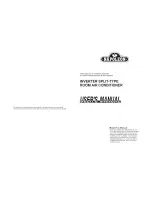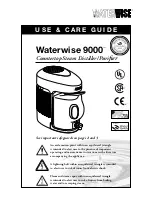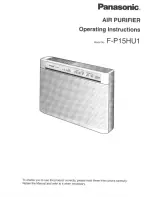
Sequence of Operation
42
RT-SVX23M-EN
When the unit is equipped with the optional clogged filter
switch, wired between terminals J7-3 and J7-4 on the
ReliaTel™ options module (RTOM), the RTRM produces an
analog output if the clogged filter switch (CFS) closes for
two minutes after a request for fan operation. When the
system is connected to a remote panel, the “SERVICE”
LED will be turned on when this failure occurs.
ReliaTel™ Control Evaporator Fan
Operation (for Cooling Only Units)
When the fan selection switch is set to the “Auto” position,
the RTRM energizes the (K6) relay coil approximately 1
second after energizing the compressor contactor coil
(CC1) in the cooling mode. In the heating mode, the RTRM
energizes the (K6) relay coil approximately 1 second
before energizing the electric heat contactors. Closing the
(K6) contacts on the RTRM energizes the indoor fan relay
(F) coil to start the indoor fan motor (IDM). The RTRM de-
energizes the fan relay (F) approximately 60 seconds after
the cooling requirement has be satisfied to enhance unit
efficiency.
When the heating cycle is terminated, the indoor fan relay
(F) coil is de-energized at the same time as the heater
contactors.
When the fan selection switch is set to the “On” position,
the RTRM keeps the indoor fan relay coil (F) energized for
continuous fan motor operation.
When the unit is equipped with the optional clogged filter
switch, wired between terminals J7-3and J7-4 on the
ReliaTel™ options module (RTOM), the RTRM produces an
analog output if the clogged filter switch (CFS) closes for
two minutes after a request for fan operation.
When the system is connected to a remote panel, the
“SERVICE” LED will be turned on when this failure occurs.
Low Ambient Operation
Note:
For ReliaTel™ units only
During low ambient operation, outside air temperature
below 55°F, the RTRM will cycle the compressor and
outdoor fan motor “Off” for approximately 3 minutes after
every 10 minutes of accumulated compressor run time.
The indoor fan motor (IDM) will continue to operate during
this evaporator defrost cycle (EDC) and the compressor
and outdoor fan will return to normal operation once the
defrost cycle has terminated and the compressor “Off”
time delay has been satisfied.
Note:
Units with the dehumidification option - When in
dehumidification mode, the unit will not cycle as
described above. The unit will run continuously in
dehumidification mode at all ambient conditions
above 40
º
F. Dehumidification is disabled at
ambient conditions below 40
º
F.
Multi-Speed Indoor Motor
Note:
Multi-speed indoor fan available only on 6, 7.5 (dual
compressor) & 8.5 tons high efficiency, and 10 ton
products with ReliaTel™ controls.
Note:
Multi-speed indoor fan standard for 17 Plus.
Models configured for the multi-speed indoor motor will
be controlled via the 0-10 Vdc or PWC indoor fan speed
output located on the RTOM. R136 (DA COOL_FAN SPD)
potentiometer on the RTOM sets the maximum motor
speed. Note that the potentiometer voltage readings can
be verified via 2-position harness connector located
adjacent to the RTOM. The unit schematic will illustrate the
exact location. Use a DC voltmeter to read the voltage
between the two terminals. Provisions have been made in
Service TEST Mode to allow for maximum motor speed
adjustment. Motor may be adjusted using modes listed
below. Reference the RPM table in the Performance Data
section for fan speed.
1.
TEST Mode Cool 2; 2-Step Cool applications only
2. TEST Mode Cool 3; 3-Step Cool applications only
Adjust R136 potentiometer clockwise to increase or
counterclockwise to decrease motor speed.
Refer to the Fan Output% list below for supply fan output
associated with each unit function:
Fan Output%
•
Ventilation Only 50%
•
Economizer Cooling 65%
•
Cool 1 (C1 Energized) 65%
•
Cool 2 (C1 + C2) 100% (2-Steps of Cooling)
•
Cool 2 (C1 or C2) 65% (3-Steps of Cooling)
•
Cool 3 (C1 + C2 Energized) 100%
•
Dehumidification Fan Speeds and Enhanced 53%
•
Heat 100%
Multi-Zone VAV Sequence of
Operation
Supply Air Pressure Control
ReliaTel™ Option Module Control (RTOM)
Supply fan is driven by a pulse-width modulation (PWM)
signal from the RTOM.
Note:
PWM = 3 to 5 tons
A pressure transducer measures duct static pressure, and
the supply fan is modulated to maintain the supply air
static pressure within an adjustable user-defined range.
The range is determined by the supply air pressure
setpoint and supply air pressure deadband, which are set
through a unit mounted potentiometer or remote panel.
The RTOM provides supply fan motor speed modulation.
Содержание Precedent WSC072E
Страница 67: ......
















































